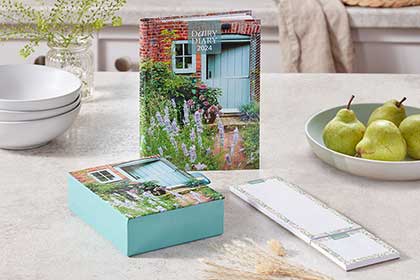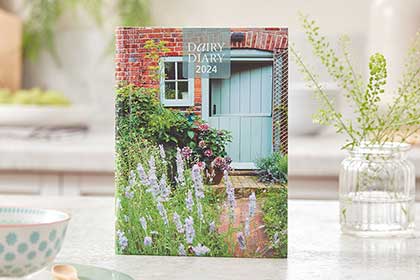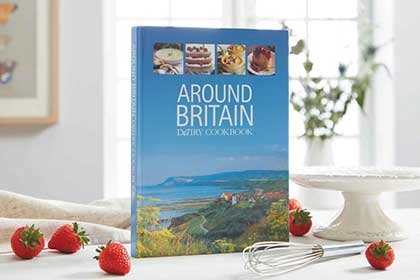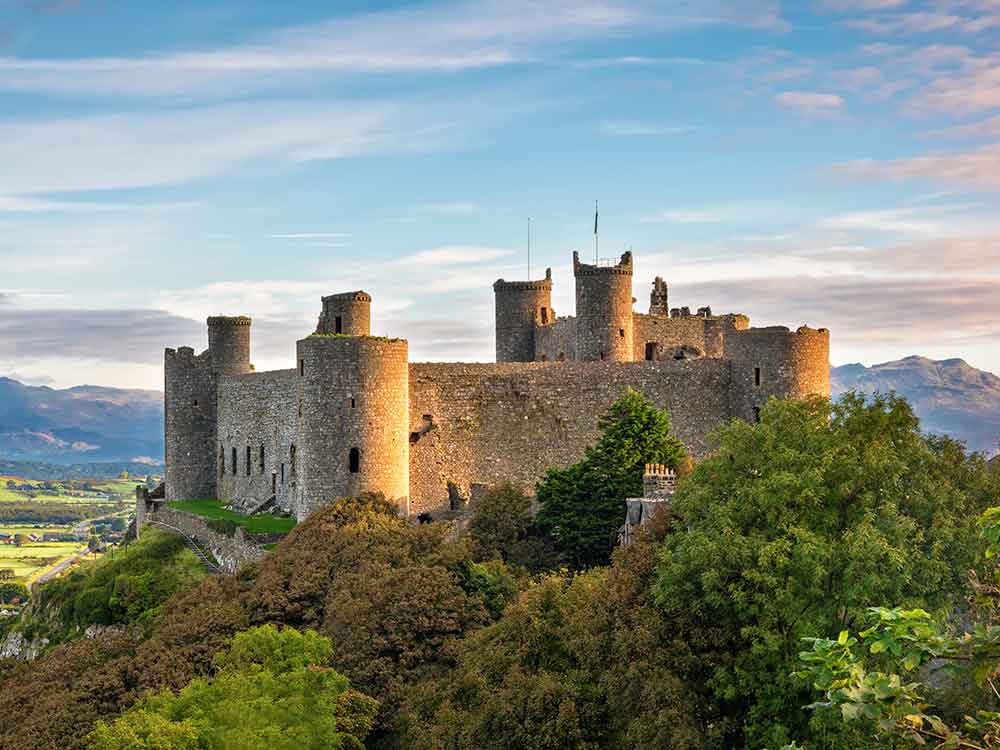New Ideas for Places to Visit
This feature from the Dairy Diary, introduces you to places where turning points in British history actually happened. I’m no history buff, but I find it fascinating and, as a foodie, I can most definitely recommend Ludlow as a must-visit destination.
See Where History Changed
It could all have been so different! Those turning points in history that set events off on a divergent path have a fascination all their own – it’s hard to resist playing the ‘what if’ game, especially in the places where they occurred. Be drawn in and enjoy some great days out.
Colchester
In AD 43, the Emperor Claudius accepted the surrender of the Celtic tribes at Camulodunum (aka Colchester) and declared this land to be the Roman province of Britannia. Colchester was its capital – until Boudicca, queen of the Iceni, took exception to the Roman presence and burnt it down. William the Conqueror built his first stone castle on the site of Claudius’s temple and the old Roman walls (built after Boudicca’s spirited fight-back) were finally breached after an 11-week siege by Oliver Cromwell’s cronies during the Civil War.
Most of the walls are still standing, however, including the Balkerne Gate featuring Claudius’s triumphal arch. Plenty more to discover here, but when exploring take a moment to consider the plight of the Roman veterans left at what turned out to be the sharp end and coming up against a very angry woman!
Pevensey Castle and Battle Abbey
Nowadays, Pevensey Castle (above) stands several miles inland but in 1066 the sea lapped at its walls and here it was that William of Normandy landed his invasion force, easily overwhelming the defenders.
The new king, Harold II, was away in the north, repelling Norwegian invaders at Stamford Bridge.
By the time he got back with his weary army, William was ensconced at Battle and everyone knows what happened next – 1066, the most memorable date in British history.
A Benedictine abbey was later built on the site, which is now in the care of English Heritage. You can explore the ruins of the abbey, walk round the battlefield, imagine the scene (with the help of an audio guide) and stand at the very place where Harold fell. Unforgettable! Why not go and take a look for yourself?
Runnymede
Visit Runnymede today and you will find a memorial to the sealing of Magna Carta, the ultimate game-changer. King John didn’t want to do it but in June 1215 he had no option. Precisely where the deed was done is a matter of conjecture – in these peaceful meadows, on nearby Magna Carta Island or under the Ankerwycke yew, a truly magnificent ancient tree on the opposite bank of the Thames (worth a visit on its own).
Four copies of the original document survive and can be seen in Lincoln Castle, Salisbury Cathedral and the British Museum. Editions from a few years later are in Durham and Hereford Cathedrals and the Bodleian Library, Oxford.
Banqueting House
Even in the days of civil war beheading a king was a radical step, and this is where it happened in 1649. Charles I pushed his luck until the increasingly powerful Oliver Cromwell and his cohorts had had enough. The trial, for treason and murder, took place in the magnificent Westminster Hall (part of the Houses of Parliament, visitors welcome).
The doomed king remained dignified to the last, walking through the glorious banqueting hall – the only part of Whitehall Palace to survive a fire of 1698, ceiling paintings by Rubens – and out through large windows onto the scaffolding erected outside. The crowd groaned as the deed was done and Britain became a republic.
 Ludlow
Ludlow
Ludlow castle makes an impressive ruin. It was once a place of great strategic importance due to its position in the border country between England and Wales, and this is where, in 1502, events took an unexpected turn that changed the fate of England. For five months or so, the heir to the throne, Prince Arthur, had been living in the castle with his young Spanish bride, Catherine of Aragon, when he caught the ‘sweating sickness’ and died, aged just 15. His younger brother now became heir, and in 1509, having been duly crowned, Henry VIII married the widow and the rest is history.
Ludlow (above) remains an unspoilt, medieval town and a visit to one of the fairs or festivals held here provides present-day fun, as well as taking you back to a less predictable past.
Market Bosworth
Near this sleepy town is the Bosworth Battlefield Heritage Centre where the whole dramatic story of a major turning point in British history unfolds. The struggle for supremacy between the rival houses of Lancaster and York started with a skirmish in St Albans in May 1455 and ended on 22 August 1485 at Bosworth Field, Richard III’s last stand. About a mile from the heritage centre, Henry Tudor won the day for the Lancastrians and thus ended the Wars of the Roses.
Incredibly, Richard’s grave was discovered in 2012, under a car park. Monks had buried him hastily, not bothering with coffin or shroud, and the rumours about a crooked spine were proved to be true. On 26 March 2015 he was reburied with due pomp in Leicester Cathedral and the car park has protected status.
 Portsmouth
Portsmouth
A day at the Historic Dockyard is not enough to experience all it has to offer, but whatever you do, don’t miss HMS Victory (above), the flagship of Admiral Lord Nelson. This is the ship on which Nelson led the line against a combined French and Spanish fleet off Cape Trafalgar, just south of Cadiz, and annihilated the enemy by dint of superior strategy, great leadership and iron nerve.
Napoleon’s plans to invade Britain were scuppered, his naval power crushed and British command of the sea ensured for a century. That’s quite a result! Sadly, Nelson was killed during the action, his enduring status as national hero guaranteed.
White cliffs of Dover
Destroy air defences, dominate the skies, send an invasion force, accept surrender. That was the plan. It didn’t work thanks to the RAF’s determined retaliation and the skill and courage of the pilots. During the glorious summer and autumn of 1940, the first sky-only armed conflict was fought out over the Channel and the famous white cliffs. What better place to find the National Memorial to the Few? It’s located on the cliffs between Dover and Folkestone, open all year.
The Battle of Britain Monument in London is on Victoria Embankment, opposite the London Eye, and Spitfires (page 29) and Hurricanes are on show at RAF Cosford in Shropshire.
Game change averted
Despite best endeavours, Guy Fawkes and the gang didn’t blow up king and parliament, Elizabeth didn’t marry Dudley, Bonnie Prince Charlie didn’t press on to London. If any of these had succeeded, the course of history may have been fundamentally changed. And what would have happened if the Bletchley Park codebreakers hadn’t worked it out?
Coughton Court in Warwickshire is where the gunpowder plot was hatched, the Ashmolean Museum has the lantern Guy Fawkes was carrying when arrested and the National Archive has his confession.
Robert Dudley, Earl of Leicester, sweeping Elizabeth I off her feet was no secret. The only problem was that he was already married. Then on 8 September 1560, his wife, Amy Robsart, was found dead at the foot of the stairs in Cumnor Place. How that came about is still open to speculation and the whiff of scandal was enough to put paid to Dudley’s marital hopes.
What little is left of Cumnor Place stands near Cumnor’s old village church. Kenilworth is where the Queen and the Earl continued their revelries. Swarkestone Bridge, south of Derby, is the longest stone bridge in England and a step too far for the Bonnie Prince. The force seemed to be with him but, nevertheless, this is where he turned back, an event remembered on Derby’s Bonnie Prince Charlie weekend, the first in December – dressing up optional.
 Revolution!
Revolution!
Mega industrial developments changed the way people lived their lives for ever and Britain was at the heart of it all. The discovery of how to smelt iron using coke was a trigger and the first ever cast-iron bridge (above) was built across the deep gorge at Ironbridge in Shropshire in 1779. This marked the birth of the Industrial Revolution and it’s still there to marvel at in all its glory. The whole area has been designated a World Heritage Site, providing a great day out with a Victorian village, workshops, museums and plenty of fun for the children.
Other significant sites include Ditherington Flax Mill, Shrewsbury, the first iron-framed building – reducing the use of wood made fire less of an occupational hazard – and the ‘slips’ at Chatham Historic Dockyard, giant sheds in which ships were built. These were the first wide-spanned metal structures in the world. Liverpool Road Railway Station, Manchester was the world’s first passenger railway station, built in 1830 and now part of the Museum of Science and Industry.
WEBSITES
battleofbritainmemorial.org
bbm.org.uk
bosworthbattlefield.org.uk
calendarcustoms.com
english-heritage.org.uk
ironbridge.org.uk

I look after communications and marketing at Dairy Diary. I’m a busy mum and love home baking and cooking for my family. In my spare time I enjoy visiting the theatre, eating out with friends and exploring the great outdoors!


































